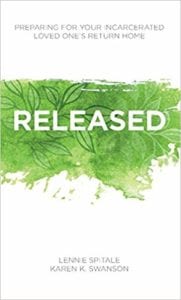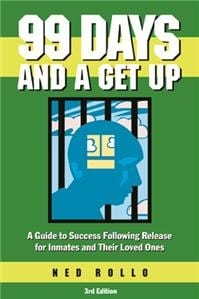General
Recommended Books
Released by Lennie Spitale and Karen Swanson

99 Days and A Get Up by Ned Rollo

Reentry in the Wake of COVID-19
The survey builds upon a CSG Justice Center survey issued in April 2020 to learn how the pandemic was impacting reentry service providers and the people they serve. These new results provide an updated snapshot of how service providers have adapted, where they continue to need support, and what new concerns have emerged as the field evolves more than a year after the pandemic began.
Reentry Annotated Bibliography “Reentry refers to the transition of offenders from prisons or jails back into the community. According to the U.S. Department of Justice, Office of Justice Programs more than 650,000 people are released from state and federal prisons annually. Another 9 million cycle through local jails. Research by the Bureau of Justice Statistics published in 2006, has shown that more than two-thirds of state prisoners will be rearrested within three years of their release and more than half (56.7%) are re-incarcerated. The number of offenders and the likelihood of their re-incarceration have made reentry a priority for policy makers and criminal justice researchers and practitioners. Breaking the cycle of re-offending and re-incarceration has many important implications for public safety and policy. This annotated bibliography addresses issues surrounding the reentry of offenders into the community. Entries are organized according to: reentry websites; reentry in general; reentry by category for jails, prisons, victims of crimes, community and family support, education, employment and housing, health and safety, and special populations; and resources with earlier publication dates.
Reentering Your Community: Handbook (BOP)
Adult Pre-release Handbook. (Minnesota DOC)
This guide helps individuals in determining where they are at in terms of preparing for release and in creating a plan to succeed once they leave prison. This handbook contains ten chapters: identification; life skills; housing; education; transportation; living under supervision; family; health; money management; and employment.
Annie E. Casey is devoted to developing a brighter future for millions of children at risk of poor educational, economic, social and health outcomes, and those involved in the Justice System.
Charting the Safe Return in the Community: Report of the Reentry Policy Council
Goodwill Industries International, Inc
This organization offers employment readiness training and job placement assistance. They believe that you can get a second chance. To begin, contact the Goodwill in your community and ask for an employment specialist. They understand that for people who have been incarcerated, there are many barriers to successful re-entry to public life, including drug dependency, serious illness, debt and limited work options. Just getting a second chance may seem almost impossible at times. They offer services to men, women and youth who have served their time and are trying to get back on track.
Post Incarceration Syndrome by Terence T. Gorski
Reentry MythBusters. Washington, DC: National Reentry Resource Center, Federal Interagency Reentry Council. Accessed 9 July, 2012.
Reentry Myth Busters are a series of “fact sheets intended to clarify existing federal policies that affect formerly incarcerated individuals and their families.” Topics covered are: formalized processes for reducing child support orders during incarceration; social security benefit reinstatement; exceptions to termination of parental rights while incarcerated; the Federal Bonding Program (FBP); Temporary Assistance for Needy Families (TANF) and welfare bans; federal student financial aid; Supplemental Nutrition Assistance Program (SNAP, formerly Food Stamp Program); criminal records and barred employment; Criminal records and Federal Government employment; SNAP benefits and a valid state ID; SNAP and a mailing address; resumption of Veterans Administration (VA) benefits; and public housing.
Understanding the Challenges of Prisoner Reentry: Research Findings from the Urban Institute’s Prisoner Reentry Portfolio, by Demelza Baer, et al. Washington, DC: Urban Institute, Justice Policy Center, 2006.
Research conducted and reported by the Urban Institute regarding prisoner reentry is highlighted. Results are organized into the following areas: employment and reentry; health and reentry; housing and reentry; substance use and reentry; families and reentry; communities and reentry; public safety and reentry; community supervision and reentry; strategic partnerships and collaboration; and select prisoner reentry publications as of January 2006.
Making People’s Transition from Prison and Jail to the Community Safe and Successful: A Snapshot of National Progress in Reentry
This brief underscores the involvement of diverse constituencies and systems in these efforts, the field’s increasing understanding and application of what works to reduce recidivism, and promising recidivism outcomes in a number of states. Finally, this brief points to the critical work that is still ahead to transform systems, continue to improve reentry for people returning to the community after incarceration, and reduce recidivism in state and local jurisdictions across the country.
